My Journey Designing the United Nations Building in Doha, Qatar
- ayhamalani
- 3 oct. 2018
- 5 min de lecture
Dernière mise à jour : 3 juin 2023
Redefining Sustainable Architecture
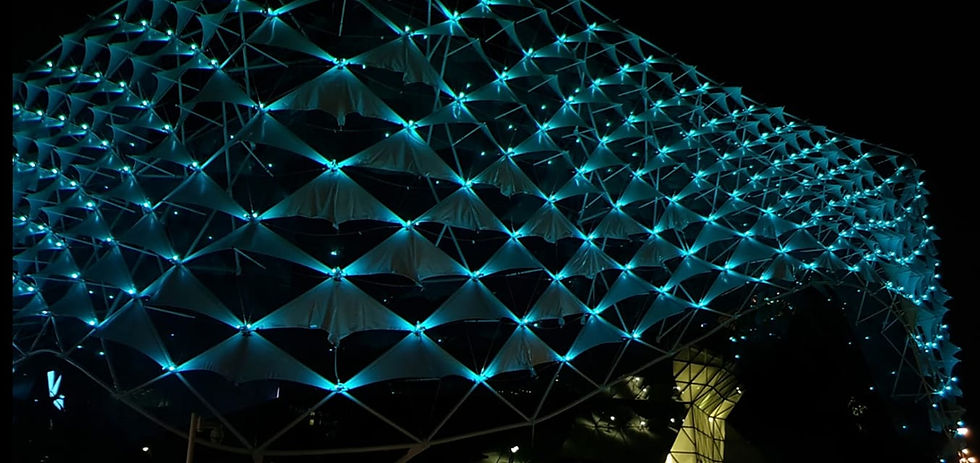
Introduction
As the lead architect behind the United Nations Building in Doha, Qatar, I am excited to share my design journey and the inspiration that led to the creation of this sustainable architectural masterpiece. The building's innovative membrane facade, cabling system, and 3-star Global Sustainability Assessment System (GSAS) certification make it a groundbreaking addition to Qatar's built environment. In this blog post, I will discuss the design process, the sustainability features we incorporated, and the impact the building has on its surroundings.

Design Inspiration:
Sailing Ships, Bridging Cultures, and the Art of Connection
When designing the United Nations Building in Doha, I sought to create a structure that would not only embody modern architectural principles but also pay homage to the rich cultural heritage of the region. The concept for the building was inspired by the sailing ships that once traversed the oceans, connecting countries and bridging cultures. This vision represents the spirit of unity, collaboration, and global understanding embodied by the United Nations.

Working together, both design houses were able to combine their unique perspectives and strengths to create a truly exceptional structure. The collaboration between Artwarecorp and Diverse Consult allowed us to harness a wealth of knowledge and expertise in sustainable architecture and cutting-edge design techniques. This synergy was pivotal in bringing the United Nations Building in Doha to life, as it fostered an environment where creativity and innovation could thrive.
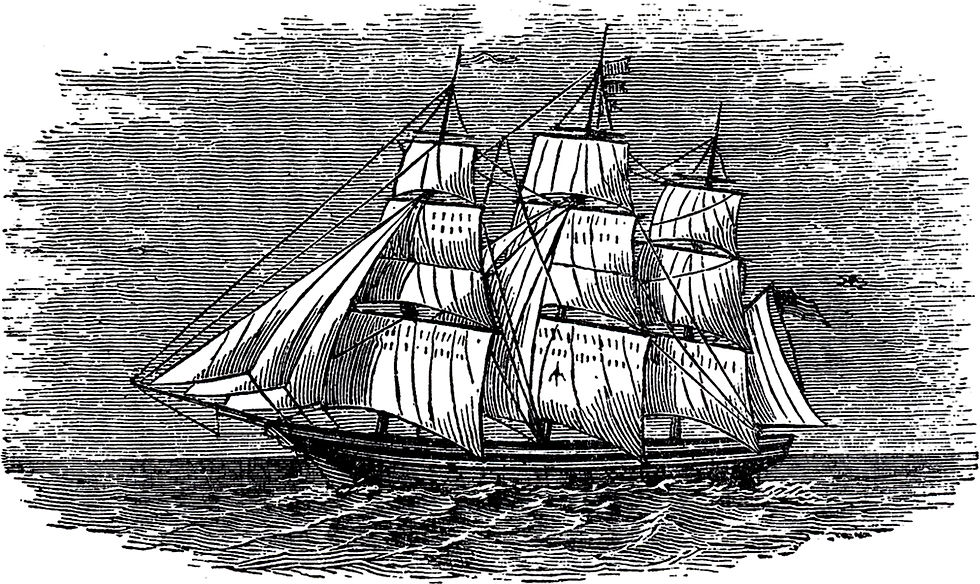
The building's dynamic and fluid form mimics the elegant curves and billowing sails of these ships, while its innovative membrane facade and cabling system capture the essence of their intricate rigging. The choice of a facade inspired by sails fabrics and cables was a deliberate nod to the maritime theme, and it allowed us to create a striking visual metaphor that symbolizes the building's role in fostering international cooperation and sustainable development.


The facade of the United Nations Building in Doha exudes an organic naturalness, elegantly integrating the polycarbonate stretched membrane fabric with the cabling and steel structure system. This innovative design approach not only creates a visually captivating exterior but also ensures that the building benefits from the translucency of the fabric, allowing ample natural light to permeate the interior spaces. The cabling and steel structure system, inspired by the rigging of sailing ships, provides a robust framework for the tensioned fabric, ensuring stability and durability.

The design and analysis of tension fabric structures, such as the one used in the United Nations Building, requires a deep understanding of materials, geometry, and structural engineering principles. When working with tension fabric structures, it is essential to consider factors such as fabric properties, load distribution, and the interaction between the fabric, cabling, and supporting steel framework. By carefully analyzing these factors, we were able to create a facade that not only embodies the maritime theme but also offers practical benefits such as energy efficiency, thermal comfort, and reduced reliance on artificial lighting. This harmonious blend of aesthetics and functionality demonstrates the potential of tension fabric structures to revolutionize the field of sustainable architecture.

Material Properties: The polycarbonate stretched membrane fabric used in the facade offers a unique combination of high tensile strength, lightweight properties, and excellent thermal performance. These properties make it an ideal material for tension fabric structures, as it can withstand various environmental conditions while minimizing the overall weight of the facade.

The cabling and steel structure system used in conjunction with the tension fabric creates a highly efficient load-bearing system that distributes forces evenly across the building's facade. This structural efficiency not only reduces the amount of materials needed but also contributes to the building's overall energy performance and stability.

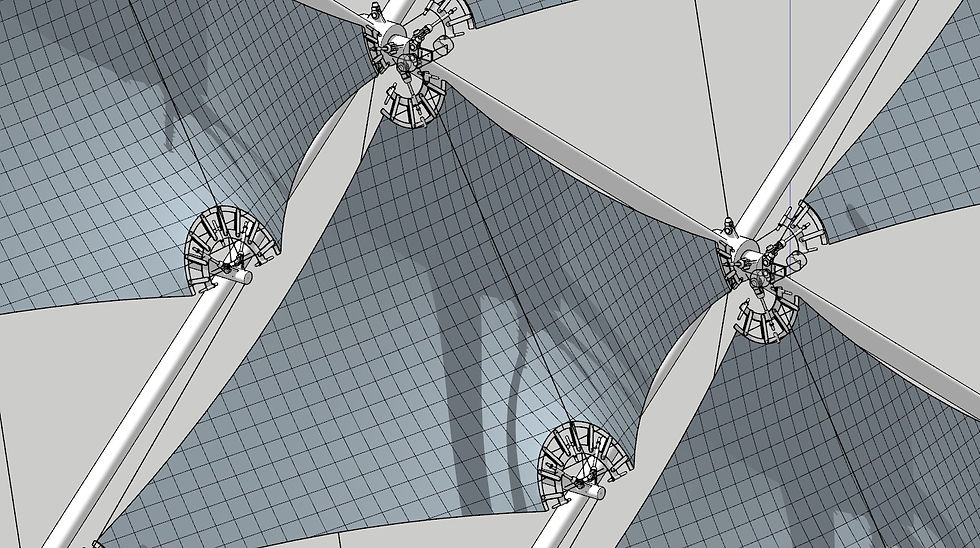

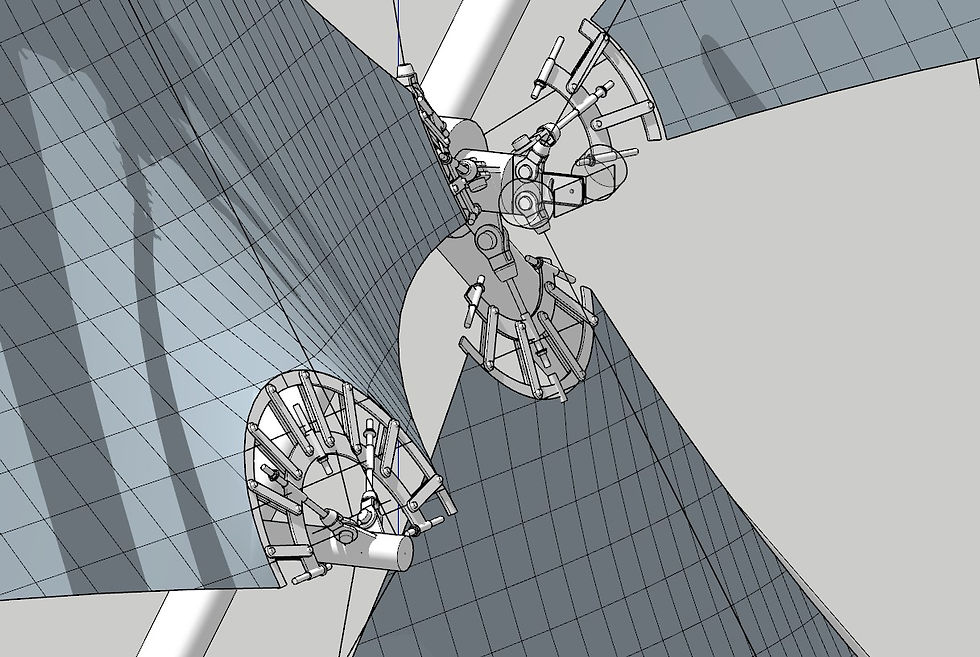
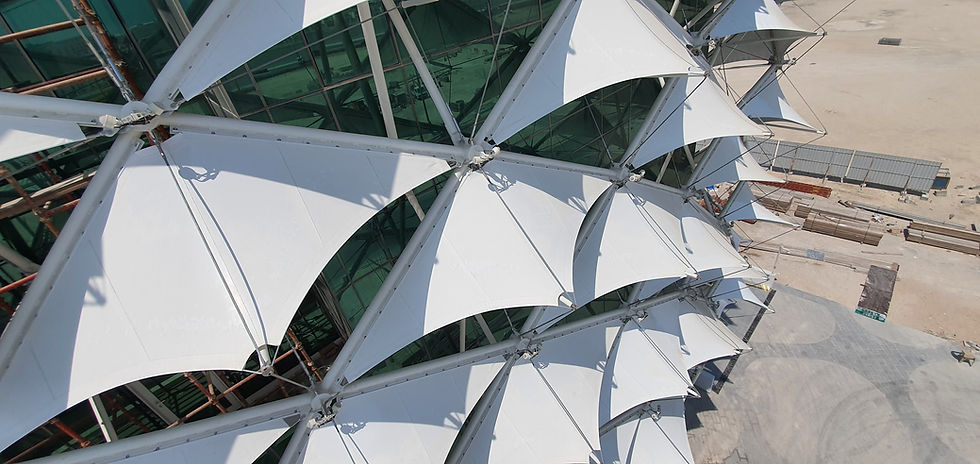
Adaptive Geometry: One of the key advantages of tension fabric structures is their ability to adapt to complex geometries and forms. The United Nations Building in Doha showcases this adaptability by incorporating a fluid, organic design that echoes the maritime theme and seamlessly integrates the fabric facade with the building's structure.
Adaptive Geometry: One of the key advantages of tension fabric structures is their ability to adapt to complex geometries and forms. The United Nations Building in Doha showcases this adaptability by incorporating a fluid, organic design that echoes the maritime theme and seamlessly integrates the fabric facade with the building's structure.
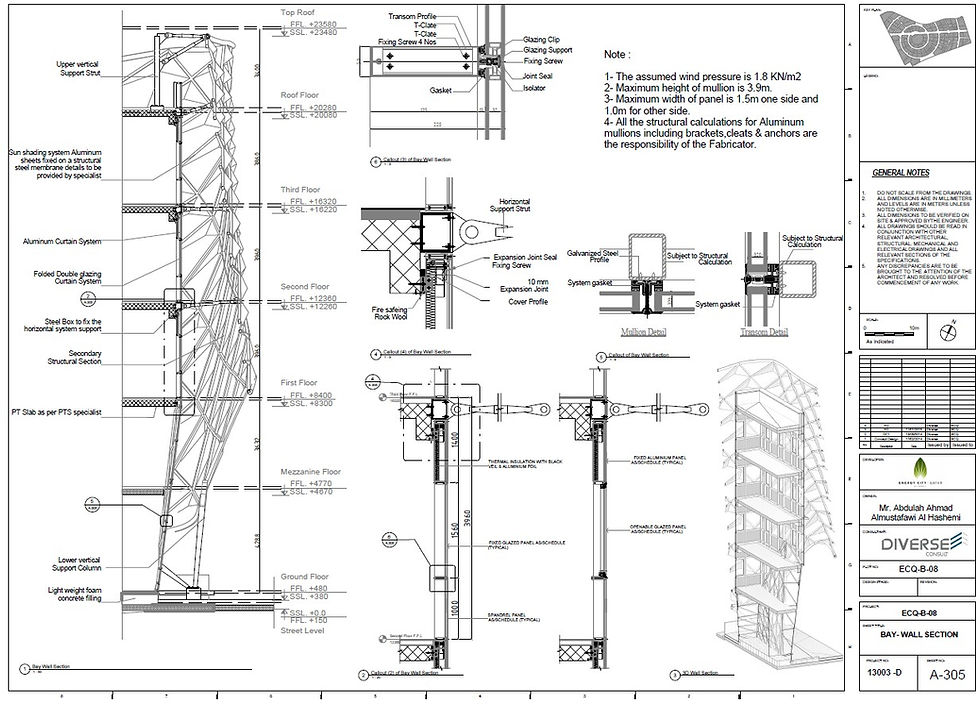
In summary, the double facade system employed in the United Nations Building in Doha not only contributes to its visually striking appearance but also promotes energy efficiency, thermal comfort, and acoustic performance. The selection of high-reflective glass for the inner layer, with a color reminiscent of the Qatar Sea, further enhances the building's aesthetic appeal while providing additional solar control and glare reduction. This innovative design approach demonstrates the potential of integrating sustainable design principles with advanced facade technologies to create architectural masterpieces that are both aesthetically pleasing and environmentally responsible, celebrating the unique culture and environment of their surroundings.


Instalation Phases


The Interior
The interior of the United Nations Building in Doha is a seamless extension of the facade concept, featuring a luxurious and ultra-modern design that elegantly incorporates elements inspired by the maritime theme. White dominates the color palette, creating a sense of purity, sophistication, and openness, while reflecting the essence of the building's exterior design. The use of high-quality materials and finishes, such as polished marble, glass, and stainless steel, further accentuates the luxurious atmosphere and contemporary aesthetic.
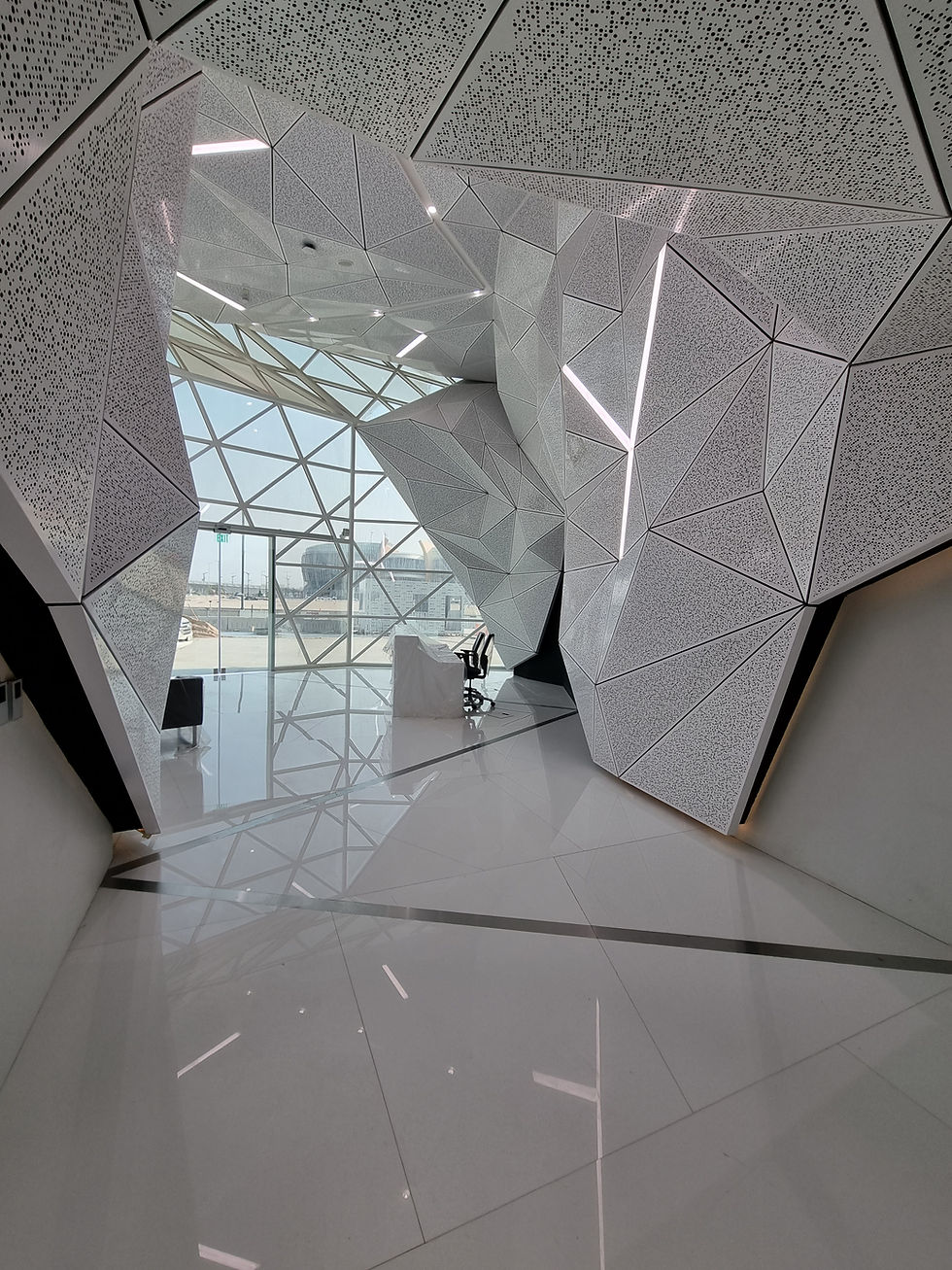
The connection between the interior and exterior is emphasized through the integration of design elements that echo the building's facade concept. Curved and fluid forms, reminiscent of billowing sails and the movement of the ocean, can be found in the interior design elements such as wall panels, ceiling features, and custom-made furniture. These organic shapes create a harmonious flow between the spaces, fostering a sense of continuity and unity throughout the building.

The minimalist design of the corridors in the United Nations Building in Doha, characterized by clean lines, uncluttered surfaces, and a white color scheme, creates a sense of simplicity and tranquility. This design approach harmonizes with the building's overall concept and connects seamlessly with the progressive parametric design of the lobby.
The lobby showcases the building's innovative architectural spirit, featuring dynamic, fluid forms that echo the maritime theme. The parametric design elements create a smooth transition from the minimalist corridors to the more intricate lobby, reflecting the building's commitment to innovation and architectural excellence.

In summary, the minimalistic design of the corridors and the progressive complex parametric design of the lobby complement each other, creating a cohesive and visually engaging environment that embodies the building's unique identity and commitment to sustainability, innovation, and cultural connection.
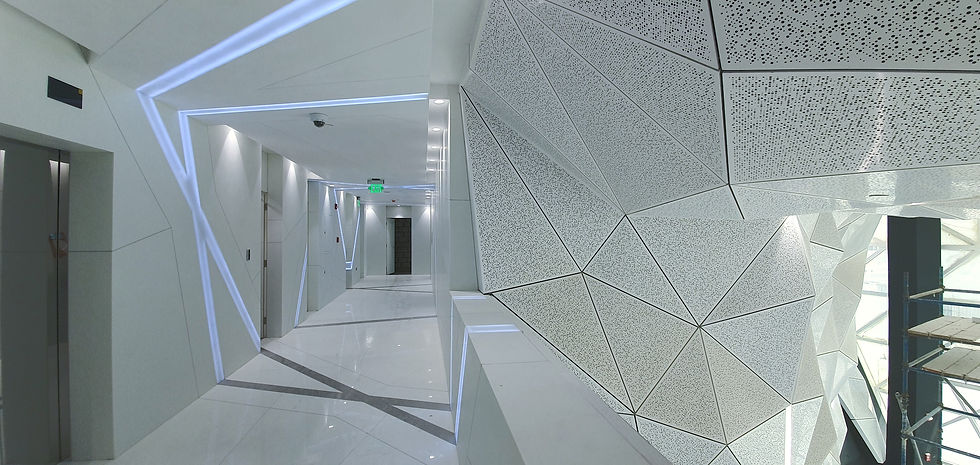


The fusion of tradition and innovation in the United Nations Building's facade is more than just an aesthetic choice; it is a statement of the power of design to bridge cultures, foster unity, and create sustainable solutions for the future. This unique facade not only enhances the building's visual appeal but also serves as a reminder of the importance of embracing our shared history and the potential of collaboration in creating a better world.

In conclusion, the United Nations Building in Doha stands as a testament to the power of innovative architecture, seamlessly blending cutting-edge facade technology, sustainable design principles, and a strong cultural narrative. From the captivating polycarbonate stretched membrane fabric facade to the minimalist corridors and progressive parametric lobby design, every aspect of the building has been meticulously crafted to create a visually engaging and environmentally responsible masterpiece. As a symbol of unity, innovation, and cultural connection, the United Nations Building in Doha truly embodies the spirit of global collaboration and sets a new benchmark for architectural excellence in the 21st century.


Commentaires